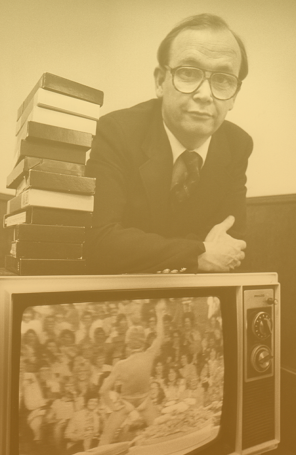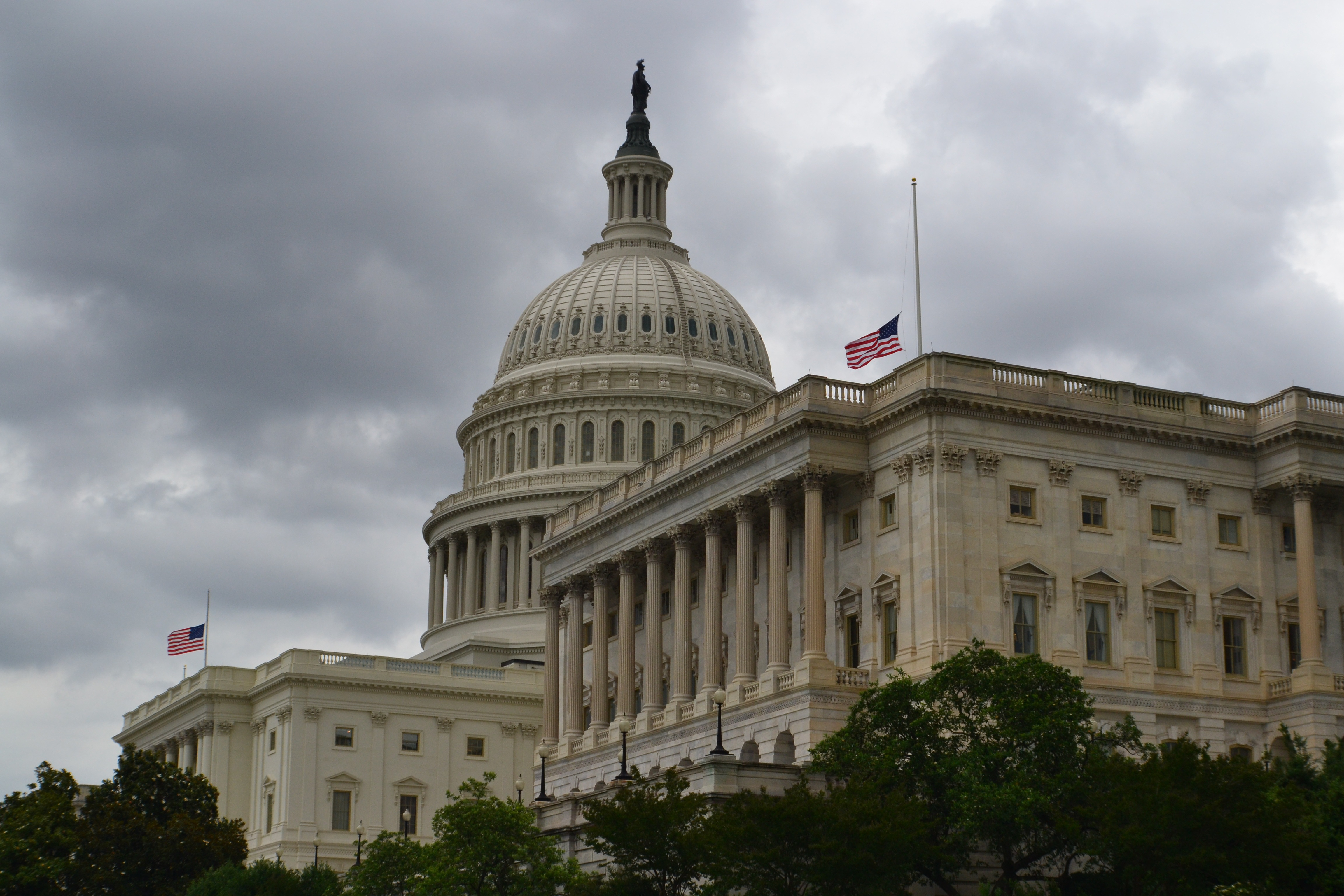Coronavirus: Faith and Facts Over Fear
Sign up for a six month free
trial of The Stand Magazine!
“Fear not.” ~ God
“No passion so effectually robs the mind of all its powers of acting and reasoning as fear." ~ Edmund Burke
The coronavirus panic has now taken on a life of its own. We’re all now just passengers on a boat in the middle of a storm-tossed sea with little or no power or authority to change its course. We’re all just along for the ride, as decisions that have a material effect on our daily lives are being made by people with a lot of power and very imperfect judgment.
It’s a very uncertain time for everyone. But let’s take to heart the story of Jesus and the storm on the Sea of Galilee. When the life-threatening storm arose, the disciples soon descended into a full-blown panic. While the disciples were in this full-blown panic, Jesus was asleep in the back of the boat with his head resting on a pillow. Whatever else we know, we know that Jesus was not panicked by that crisis.
In fact, he rebuked the disciples for giving way to their panic and responding to the crisis with fear rather than faith. “Why are you so afraid? Have you still no faith?” (Mark 4:40) Remember what Jesus told them, “Let us go across to the other side” (Mark 4:35). He did not say, “Let’s go out in the middle of the sea and drown like rats.” But faced with the prospect of a boat filling with water, they completely lost sight of the words of the Master and were consumed with fear.
Let’s not forget that in another circumstance when Peter had overcome his fear, he was able to walk on turbulent waters - as long as he locked eyes with the Lord. It was only when he shifted his focus to the waves, instead of the master of the waves, that he began to sink.
The solution for us, as always, is to be guided by faith and facts rather than by fear. There are some very important facts we need to keep front and center as this coronavirus panic runs its course.
First, the actual mortality rate is not nearly as high as people think. The mortality rate in the U.S. as I write these words is just a little over 1%. That means that if 100 people are infected with the virus, 99 of them will live. Reasonable estimates for the case fatality ratio in the general U.S. population vary from 0.05% to 1%.
Less than one percent of everyone diagnosed with COVID-19 will have a severe enough case to require hospitalization.
On a per capita basis, our mortality rate is already lower than the top six nations in the world. As more testing is done, the mortality rate will decline as more people will be included in the headcount who got infected but didn’t die.
Eighty to eighty-five percent of all cases of COVID-19 are mild, in some cases so mild that many folks have had it but didn’t even know it. Their symptoms weren’t any more severe than the ordinary flu or a common cold.
This, of course, does not mean we should treat the virus lightly. We can’t. It kills people. But if we are diligent to practice good hygiene by washing our hands and staying home when we’re sick, as we have been taught to do since we were children, the spread of the disease can be significantly slowed.
In fact, the fatality rate in the U.S. (not the total number of deaths but the rate at which people are dying) is drastically declining as the number of cases increases.
South Korea has a mortality rate of less than 1%, and they have resorted to no lockdowns or “shelter in place” restrictions. You can still go to church or to the gym or out to eat at a restaurant there, and South Korea still has a death rate that is lower than ours, largely due to aggressive testing right from jump street.
Regarding school closures, the CDC points out that places that closed schools (like Hong Kong) have not had more success in reducing spread of the virus than those like Singapore which did not. In fact, based on transmission evidence and the confined spaces principle, it is more likely that children will catch COVID-19 at home than at school. In fact, isolating every family in their own home might actually increase the chances of infection and transmission among family members.
Closing down our school systems nationwide will cost our economy in the neighborhood of $50 billion. We could build 50 hospitals with 500+ beds per hospital for that amount of money.
Asymptomatic people (folks who show no symptoms) are not contagious and do not need to be tested. WHO and CDC claim that asymptomatic spread isn’t a concern and is quite rare. When someone has symptoms (fever, a dry cough, and breathing problems) that’s the time to start self-quarantining to protect others and get tested. Only severe cases need hospitalization.
Data from round the world shows that 95% of people who are tested aren’t positive, and that 93% of people who think they are positive aren’t.
Even in China there is good reason to believe that there are virtually no new cases now. The coronavirus will run its course as all viruses do. Daily growth rates (that is, not the total number of cases but the rates at which cases are growing) are in steady decline all over the world, no matter what particular public policy solutions (such as social distancing) are tried.
According to Nobel Laureate and biophysicist Michael Levitt, the infection rate is declining. “The fact that the infection rate is slowing down means the end of the pandemic is near.”
We know from Italy’s experience that senior citizens are by far the most vulnerable to the virus. The average age at death for COVID-19 victims is 81. According to a study of the fatalities of COVID-19 cases in Italy, 99% of all deaths had an underlying pathology. Only 0.8% had no underlying condition.
According to the American Medical Association, no death below the age of 10 has been reported anywhere in the world. And according to the Wall Street Journal, children have a near-zero chance of becoming ill. They are more likely to get normal flu than COVID-19. (It’s worthy of note that while there have been no pediatric deaths this year from COVID-19, we’ve already had 136 pediatric deaths from the seasonal flu.)
Medical research shows that COVID-19 doesn’t spread as easily as everybody - including the media and power-hungry politicians - want us to believe. If you come in contact with someone who tests positive, you have somewhere between a one and five percent chance of catching it as well.
The majority of viral infections come from prolonged exposures in confined spaces with others, but even then, transmission is not inevitable. “If you have a COVID-19 patient in your household, your risk of developing the infection is about 10%, and if you were casually exposed to the virus in the workplace your chance of infection is about 0.5%.”
Air-based transmission or untraceable community spread is very unlikely. According to WHO’s COVID-19 lead Maria Van Kerkhove, true community-based spreading is very rare. Respiratory droplets are too heavy to travel more than a few feet.
Local governments and politicians are inflicting massive harm and disruption with little evidence to support their draconian edicts (the governor of Washington has banned funerals, if you can believe it). Every local government and every governor seem to be in a race to see who can impose the most draconian restrictions the fastest.
Even if these “shelter-in-place” edicts were suspended today, it will take a decade to repair the damage we have already done to our economy. If we let these lockdown policies go another two weeks, there may not even be an economy left to save. This is why three-fourths of Americans are more afraid of what government is doing to our economy than of what COVID-19 is doing to our health.
Many of the governmental edicts coming from state and local governments are driven not by evidence-based thinking but by emotion and fear. Elites are insulated from the impact of imposing draconian regulations that are devastating ordinary Americans. Said one writer, “People’s lives are being destroyed with Marxian vigor.”
All of this in response to a virus that has impacted 0.004% of our population.
That takes us back to Jesus and the disciples in the boat. The bottom line is that we don’t need to panic until Jesus does. And that’s not going to happen.
Remember that as long as Jesus is in the boat with us, the boat won’t sink and the storm won’t last forever. We will make it to the other side. Peter was even able to walk on turbulent waters as long as he kept his eyes fixed on Jesus. It was only when he shifted his focus from the Lord to the waves that he began to sink. Let’s take all the things that worry us - our health, our families, our finances, our pensions - and take them out of our basket and put them in the Lord’s basket. He will take care of them for us.
The author may be contacted at [email protected]

Sign up for a free six-month trial of
The Stand Magazine!
Sign up for free to receive notable blogs delivered to your email weekly.



















